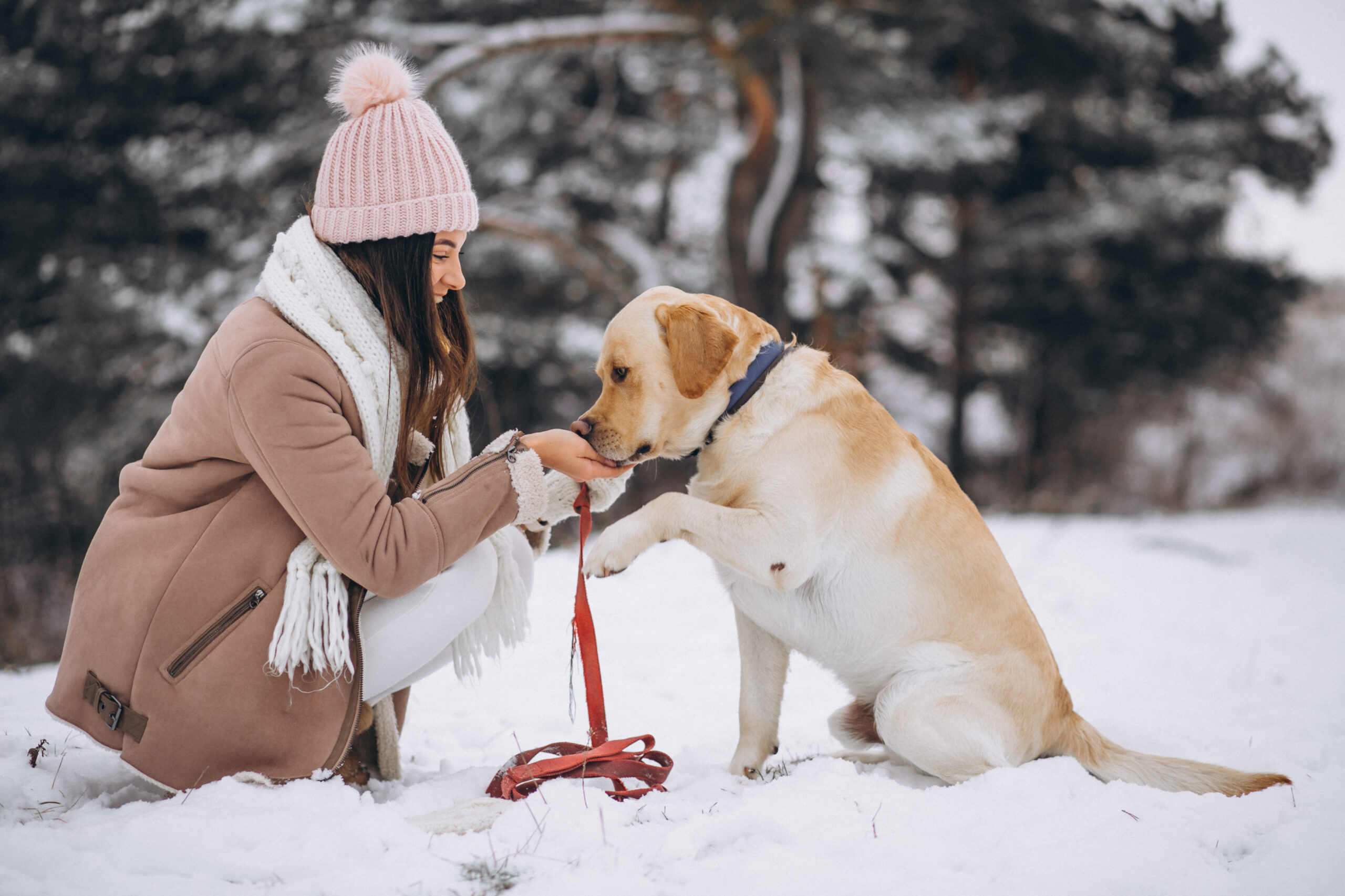
Preparing Your Dog for Winter
Written by A.R.F. Volunteer Shane C.
Snow is falling as I write this and I have accepted winter is closing in. By the time you read this, the snow will have surely melted. Regardless, Mother Nature waits for no one and your dogs will still want to go on a walk rain or shine; or snow. Let’s take a look at a few preparations you and your dog can take to keep active and safe during the winter.
As temperatures drop outside, the winter coat has been brought to the front of the closet. Lucky for us! Not so lucky for your dog who wears the same coat year-round. Simply put: if you are too cold outside, so is your dog. Especially short-coat dogs who will be less tolerant of cold weather in comparison to long-coats. Body fat percentage, size and coat length are all key factors. So, to prepare your short-coat companion for winter, be mindful of time spent outdoors, get them a coat or a sweater and get them used to wearing dog boots to protect the paws.
Long-coat dogs are not completely safe in the colder months either. While a sweater might not be necessary for dogs with longer coats, extra care to make sure all ice, snow and salt is removed after a walk will be key. Leaving these irritants around your dogs paws can cause soreness and paws will begin to crack if not taken care of. Dog boots are the best protection against irritation and damaging of your dogs paws. However, this might bring up another battle as many dog owners know the struggle of putting boots on a dog.
Protection for paws is important for both coat types, though. Simply put: dogs are not used to having their paws covered and is the main reason they put up a fight when we try to cover them. If headed outside into the snow and ice without a dogs paws covered, be sure to wipe their paws thoroughly after the walk. Trim between your dogs toes, keep the walks short and make sure plenty of towels are available upon your return. Snow melting chemicals (or salt) on roads and sidewalks are unpleasant for dogs. Dryness, cracking and even burning of the paws are all side effects of unprotected paws. Best course is to get your dog used to wearing boots during the winter months and have plenty of paw balm.
Winter is coming. Whether we are ready or not. The steps mentioned above will help you and your dog enjoy the colder months. Protection such as a sweater for your short-coat dog, some heavy duty boots for your long-coat dog and a pile of towels and paw balm plentifully stocked near the door upon your return. Your dog is still going to want to go outside. We have our coats, hats and gloves ready. So, we need to make sure we have the same cold weather protections for our dogs.
If you have any suggestions please throw them in the comment section below!
